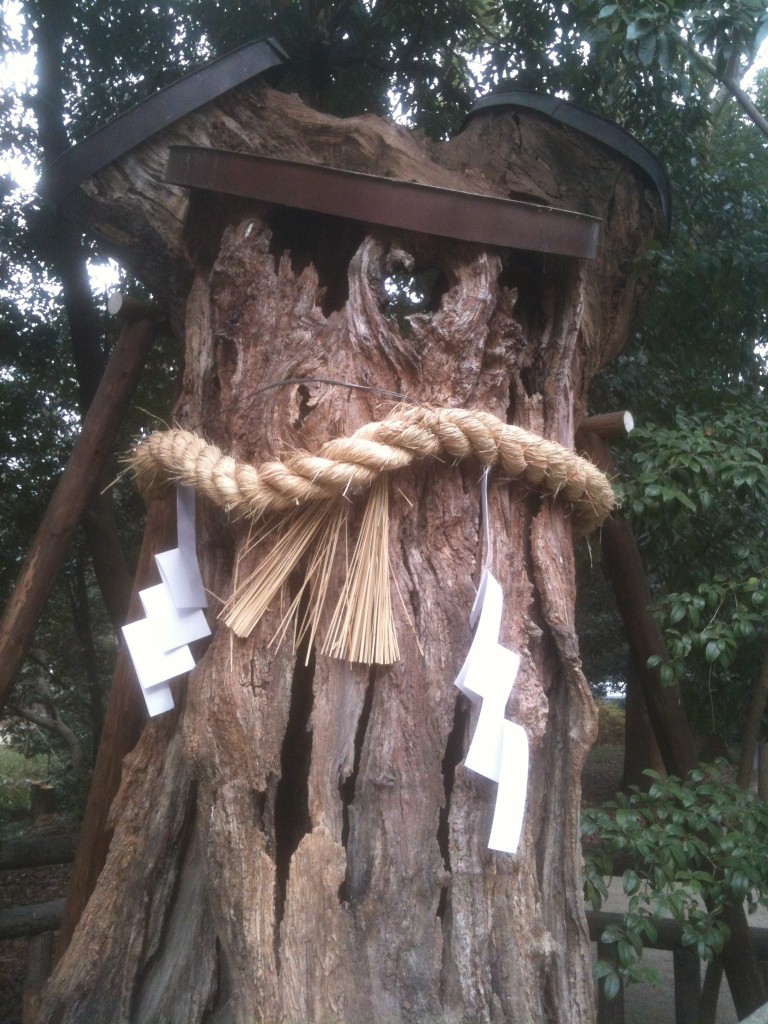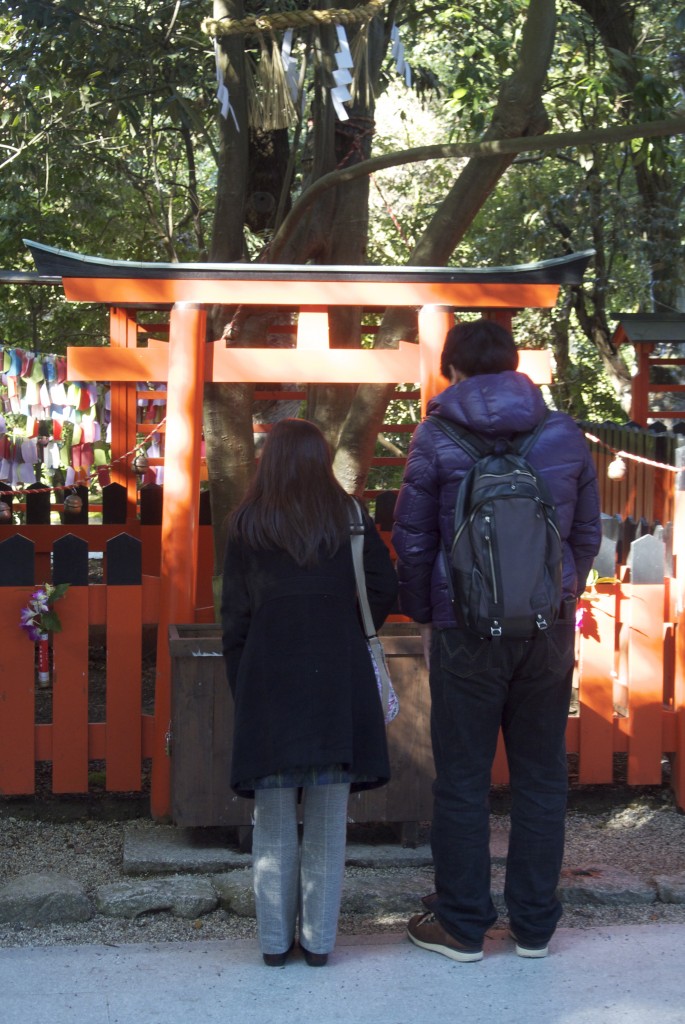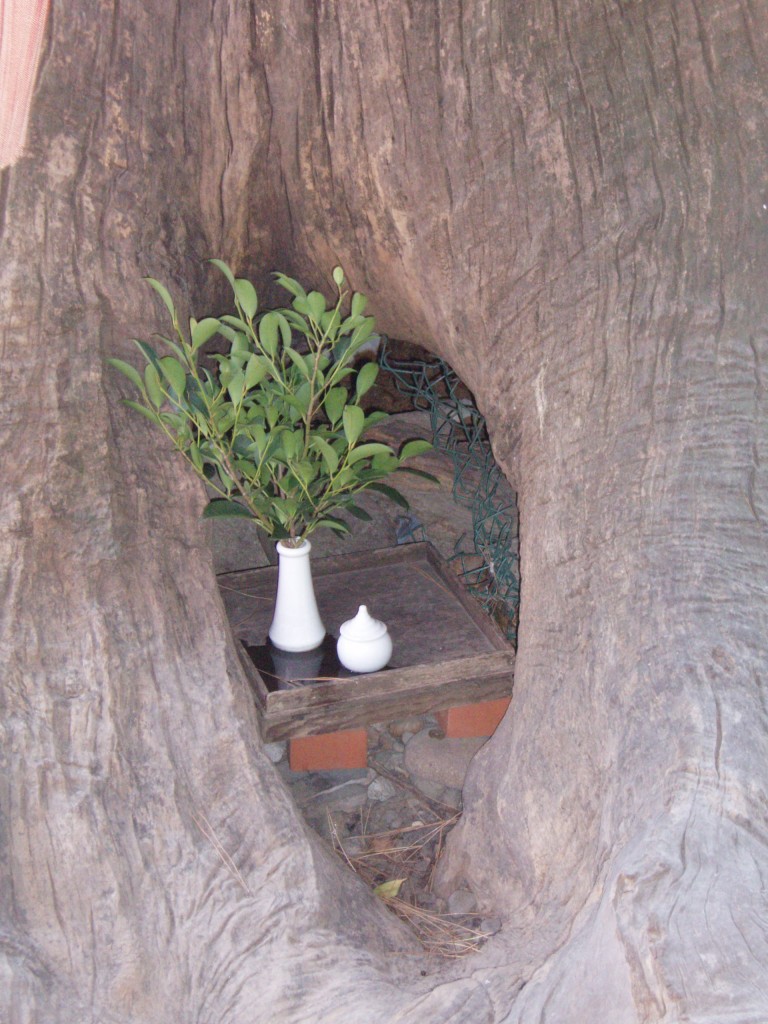Here is a sad update on the poisoning of sacred trees, which featured in an earlier entry. The poisoners have not yet been caught, but the number of their crimes has grown considerably. In the passage below, there is a description of the ritual held for the trees before they were cut down…
****************************************************************************************************
 Serial tree killer on the loose in 5 prefectures
Serial tree killer on the loose in 5 prefectures
Japan Today DEC. 31, 2012
Sacred trees are usually massive in size and centuries old with some reportedly over 1,000 years old. You can usually tell them from the “shimenawa” wrapped around their trunks. A shimenawa is an extremely thick rope which encloses something holy and wards off evil from outside.
These age-old trees are beautiful specimens of nature’s strength and longevity and add an extra level of serenity to their shrines. However, in the past month, someone or some group has been killing off these sacred trees of shrines in five separate prefectures in Japan.
The So-Kawachi Daimei Shrine in Ehime Prefecture sits in the tiny remote village of Namegawa nestled in the mountainous outskirts of Toon city. It is home to a pair of sacred hinoki (Japanese cypress) trees each over 500 years old.
In September, strange holes were found around the base of their trunks and substantial withering was taking place throughout the trees. A subsequent police investigation found traces of chemical used an “arboricide” or tree poison.
After long consideration, the shrine determined on Dec 26 that the considerably weakened trees posed a risk of collapse and needed to be cut down.
 The day before, the head priest and townspeople held a ritual to pray for the safe removal of the trees. The priest gave a Shinto prayer known as a norito to thank the trees for their protection of the shrine from the elements for so many years.
The day before, the head priest and townspeople held a ritual to pray for the safe removal of the trees. The priest gave a Shinto prayer known as a norito to thank the trees for their protection of the shrine from the elements for so many years.
“For many years, these trees and I have watched over this shrine. With the trees gone, there is only emptiness,” said the head priest in a eulogy fused with frustration over someone deliberately killing these landmarks of his shrine.
He then faced the trees one last time and gave an offering of rice and salt so that their souls may be calmed. The following day, after half a millennium, the two trees came down.
As a result of this incident, the Forestry Agency conducted an emergency survey for sacred trees that died by human hands. What they found was a string of sacred tree poisonings across several prefectures west of Aichi.
Kochi Prefecture was hit the hardest with seven sacred trees killed off at shrines located in sparsely populated areas. Tokushima saw three trees die and Wakayama and Aichi prefectures each had one death. Including the twin trees in Ehime Prefecture, the toll comes to 14.
In each case, holes were drilled into the trunks at a depth of about 4 cm and a tree killing chemical was injected. The chemical could then travel up the trees’ xylem which act like veins and delivers the poison throughout the plant.
Authorities speculate that the trees were poisoned and killed in an effort to get their “sacred” lumber that would fetch an extremely high price as a building material.

Cherishing the sacred heart of the tree

I am saddened by the news of the death of the old tree. I have many trees on my farm, Mamushi Nature Farm, located within the Enchanted Valley of Mamushi, here in Franklin, Tennessee, USA. All trees, here at Mamushi, are sacred.
Regards,
Dr. Haddox
Again, my prayers are constantly going out to you, there in Japan, that “no more” of your sacred trees will be killed. We, here in the Enchanted Valley of Mamushi, Franklin, Tennessee, moan the lost of these great spiritual trees, with you.
Regards,
Dr. Haddox
It is such a sad thing to read about. I only wonder if it has been suggested to the Shrine authorities that if by poisoning the trees the perpetrators hoped to gain from there actions, then perhaps future affected shrines should cut the poisoned trees down and burn them, perhaps as offering and most importantly as a statement. Warm regards.
Thank you for the response, David. As far as I understand, the perpetrator has been remanded and the issue has been resolved. The crime was motivated by the high price of some increasingly rare types of wood, and the poisoner was hoping to profit by selling off the felled trees. Your suggestion is not a bad one, though perhaps it would make even more sense for the shrines to reuse the timber or sell off pieces of the sacred tree (or ash) for shrine maintenance – and replanting.
Thank you that is good news, I like your suggestion much better, just as long as the perpetrators in no way profit from there actions! Warm regards.